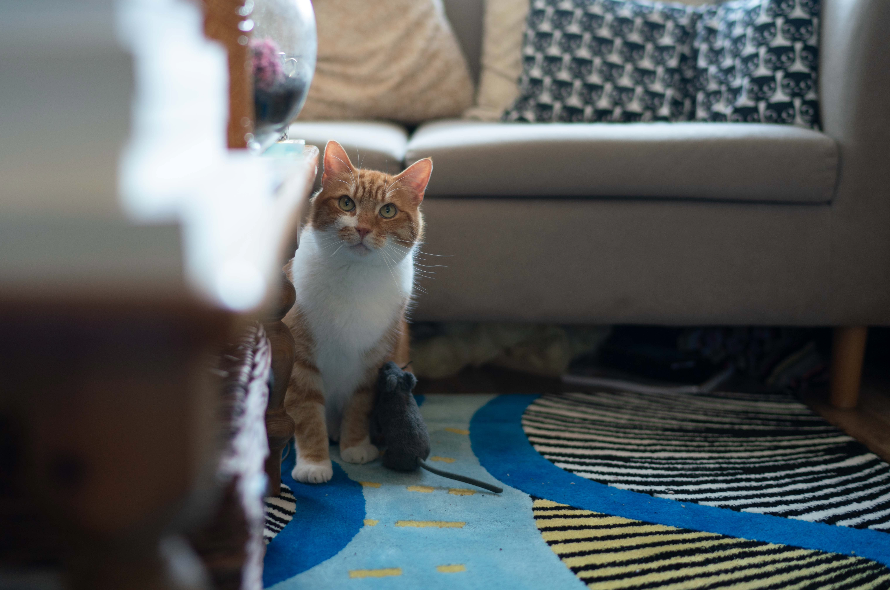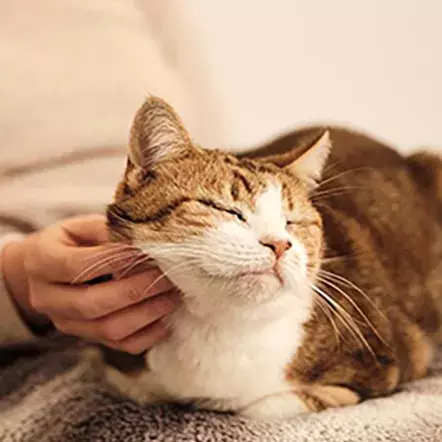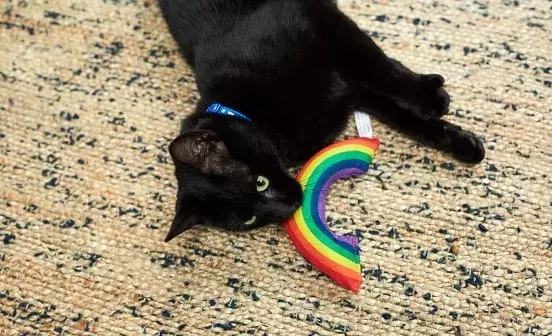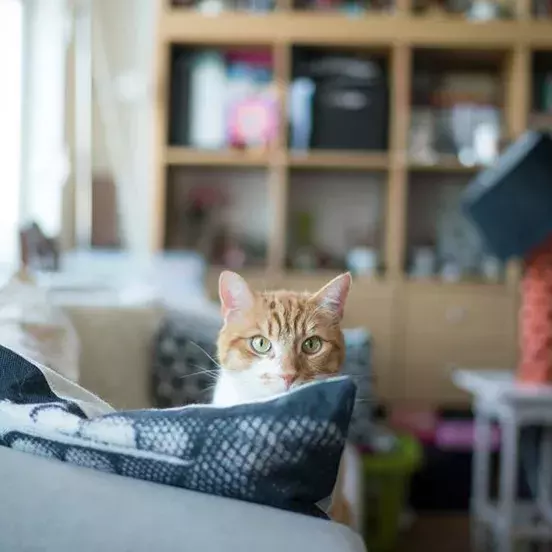Every cat has a unique personality, just like humans. While some cats are bold and confident, some cats are nervous by nature. This is because a cat’s character and their behaviour are shaped by their experiences as a kitten, as well as what they’ve learned and experienced, and their individual genetic make-up.

Some nervous cats will always be more timid, but there are ways that we as owners can help them to feel more relaxed and try to help them feel more comfortable.
Have a look at our advice piece on how to settle your cat into a new home for advice on helping your cat manage the transition to a new environment.
Every cat has a unique personality, just like humans. While some cats are bold and confident, some cats are nervous by nature. This is because a cat’s character and their behaviour are shaped by their experiences as a kitten, as well as what they’ve learned and experienced, and their individual genetic make-up.
HOW CAN I HELP MY NERVOUS CAT?
GIVE THEM CHOICE AND CONTROL
Cats have evolved as an independent, solitary species, so being able to make their own decisions is important. Giving them choice and control over what they do, and how, when, and with who they do it is key to reducing stress for your nervous cat.
GIVE THEM PLACES TO HIDE, OR TO GET UP HIGH
One strategy cats often choose when scared is to find a secure hiding spot. It is important for owners to provide their cat with opportunities to hide, go up high and feel secure. It’s a good idea to give your cat lots of possible options for this, such as open cupboard doors, areas under beds, shelves, large cat trees, cardboard boxes and space behind furniture so they always have somewhere to go whenever they feel nervous or scared.
LIMIT CHANGES OR MAKE THEM SLOWLY
For a cat settled in a home, any change to routine or a new addition to the family (such as a new cat or dog or baby) can be particularly stressful. Any change in the owner’s behaviour, work patterns and other routines, or the cat’s access around the home can also be a cause of stress.
It’s therefore important to try to maintain a cat’s normal routines as much as possible and if you need to make any changes (e.g. moving your cat’s food, or bed, or limiting their access around the home to accommodate the arrival of a new baby or another cat), you should do this gradually and before the new arrival, whatever it is, appears. For more information on reducing your cats stress, please see our advice on reducing stress in cats.
MANAGE THEIR RELATIONSHIP WITH YOUR OTHER PETS
Cats have evolved from a mainly solitary species, so they may see the presence of another cat in the home as a possible ‘threat’. It’s therefore really important to try and choose cats that will be compatible with each other. It’s also vital that you introduce the cats carefully and gradually and make sure the home environment is set up in a way that means they are more likely to get along. Take a look at our advice on introducing your new cat to your resident cat for more information on this.
When it comes to introducing your new cat to a resident dog, the key here is again to introduce them carefully and slowly so that the cat has a better chance of feeling safe and in control in the presence of the dog. Take a look at our advice on introducing cats and dogs for more information on how to go about introducing them and how to manage their relationship longer term.
MANAGE THEIR RELATIONSHIP WITH CATS IN THE LOCAL AREA
Unfamiliar cats in the area coming into the home (whether you encourage them to come in or not) can be very stressful for your cat, because they may feel as though they have to be constantly on the look-out, ready to defend their core territory at any minute. If these other cats are not vaccinated, be aware that they may also transmit disease to your cat.
The best way to manage this problem is to ensure you feed your cat far away from the cat flap or back door (so that intruder cats are not enticed by the smell of nearby food) and we would also recommend a microchip-operated cat flap. This allows you to programme the flap so that only cats with the correct corresponding microchip can access the cat flap. This is the same identification microchip that is linked to your contact details and is implanted under the skin on your cat’s neck.
KEEP INTERACTIONS ON THEIR TERMS
It is important that your cat always has the option to remove themselves from interactions if they choose. This means you should avoid physically restraining your cat when you are stroking them, and you should never try to pet them when they are trapped within a hiding space. This will help them to feel more relaxed and in control when they interact with you.
You should always allow a cat to approach or initiate the interaction first. Some cats may be very quick to tell you what they like (by miaowing for more or pawing at you when you stop stroking them) and what they dislike (by swiping at you or biting you), but others may be much subtler in communicating how they feel. Many cats may simply tolerate being stroked or handled even though they are not enjoying it, and often it is these cats that can become the most stressed from these interactions.
Pay close attention to your cat’s behaviour and body language when you are interacting with them as this will help you to better understand where and for how long your cat likes being touched. You can find out more about this in our advice on how to interact with your cat.
MAKE SURE HUMAN VISITORS ARE CAT-FRIENDLY
Very friendly and bold cats may see visitors as something pleasurable and exciting whilst more nervous or sensitive cats may become worried by the presence of unfamiliar people in the home.
You can help your cat to feel safer in these situations by making sure they are always able to escape and hide or safely get up high somewhere. If your cat is sensitive or shy, then it may be helpful to follow these tips:
- Let your guests know if your cat is likely to find new people a bit overwhelming and ask that they let the cat choose whether to approach them or not. Your cat may prefer to have a good look first before they choose to interact. Sometimes it is better for your guests to ignore them and let your cat make the first move.
- If your cat is motivated by food treats, ask your guests to gently throw some of your cat’s favourite treats on the ground a short distance away from them, which may encourage your cat to approach them.
- If your cat does approach them, advise your guests to crouch down and offer their hand to sniff. If your cat sniffs or rubs against their hand, you can encourage your guests to gently stroke the area around your cat’s cheeks and chin. If your cat is very playful, you could also encourage your guests to use a fishing rod or feathered wand toy if you think they would be more comfortable playing than being stroked.
TRY A CALMING PHEROMONE PLUG-IN
Plug-in diffusers which contain calming pheromones, plug into an electrical socket and emit a synthetic version of a pheromone that cats produce naturally from scent glands in their cheeks.
These can be very helpful for nervous cats, and it can be a good idea to use one in a socket in the area of the home where your cat spends the most time. The presence of the pheromones will help to reduce their stress, make them feel safer and more secure and support them in their home. Please follow the manufacturer’s instructions carefully to get the most out of the diffuser and to ensure it is safe.



